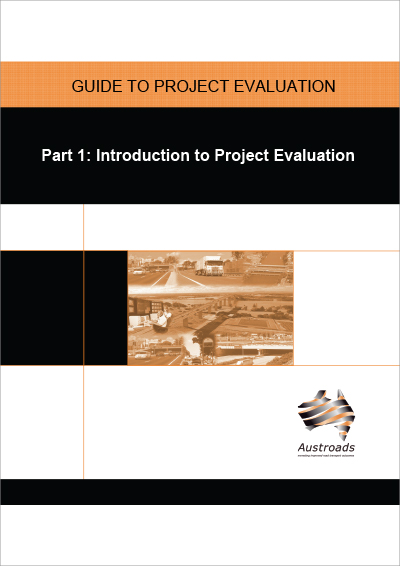Economics and Financing

- Publication no: AGPE01-09
- ISBN: 978-1-921551-85-7
- Published: 6 November 2009
- Edition: 2
- Superseded
- PDF (free) Download
Part 1 of the Guide to Project Evaluation provides the context in which project evaluation is carried out. It provides an introduction to project evaluation and anticipates a link-point with the wider area of road transport planning, a very complex and demanding area that sets the appropriate context for project evaluation. Context and criteria in economic evaluation are needed to help the practitioner succeed in evaluating projects. Transport practitioners charged with the task of evaluating a transport project need to have an understanding of the physical system and political context in which the project was conceived. Understanding of the strategic planning context from which the project has been derived is particularly important as it defines broad outcomes of the transport system such as efficiency, safety and sustainability. A three-stage evaluation process is recommended for evaluation of transport projects: (i) test strategic fit (i.e. assessment against broader strategies, policies and plans); (ii) investigate and analyse project options (solutions) that pass the strategic fit; and (iii) develop a business case for the preferred option. Part 1 also provides an outline (roadmap) of evaluation tools and methodologies presented in subsequent parts of the guide.
- 1. INTRODUCTION
- 2. OVERVIEW OF THE PROJECT EVALUATION PROCESS
- 2.1. Understanding the Problem to be Solved and the Strategic Context
- 2.2. Establishing the Purpose of the Project and Relevant Assessment Criteria
- 2.3. Transport Network Considerations
- 2.4. Developing Possible Solutions
- 2.5. Staged Evaluation Process
- 3. PROJECT EVALUATION PROCESS AND THE GUIDE
- 4. NAVIGATING THROUGH THE REST OF THE GUIDE TO PROJECT EVALUATION
- 4.1. Part 2: Project Evaluation Methodology
- 4.2. Part 3: Models and Procedures
- 4.3. Part 4: Project Evaluation Data
- 4.4. Part 5: Impact on National and Regional Economies
- 4.5. Part 6: Distributional (Equity) Effects
- 4.6. Part 7: Post-completion Evaluation
- 4.7. Part 8: Examples
- BIBLIOGRAPHY
